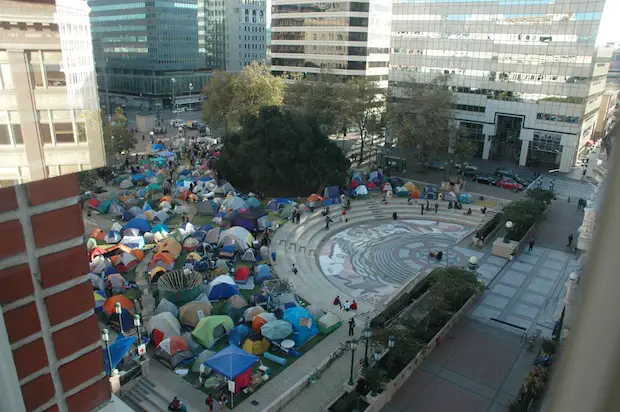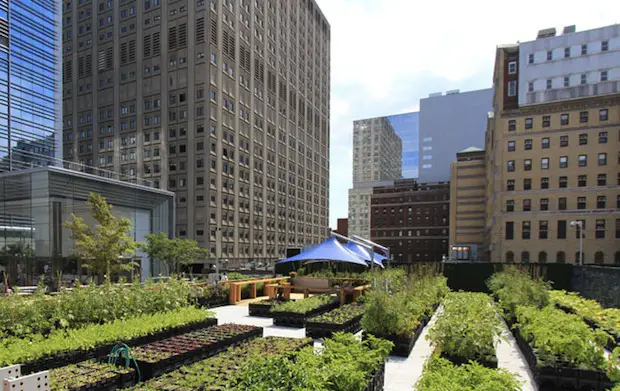Ever wonder what makes a city tick? What I mean by ‘tick’ can better be defined in the answers to several questions which, with an inquiring eye, I observe cities. Why is everyone moving? Or not moving? And what starts it all? What ‘music’ initiates this urban ‘dance’ and preserves its energy throughout the day? Even at night, the music of a city is a soothing instrumental which vibrates smoother than the smoothest Jazz.
Using a bit of my city, Chicago, as an example, I’m going to explore a city’s repeating energy and the sound elements which create and sustain it. Citizens live in music, as music. There exists a level of atonality of which we begin to systematically shape through structures. I’ll be referring to these structures as ‘instruments’ and us (people) as ‘musicians’ or ‘instrumentalists.’
As the L crescendos above Wabash and Congress, my feet stand on a block where the winos crooked stagger meets the high strides of the youth. An old treading ground of mine, Columbia College Chicago, plays a key instrument in Chicago’s downtown orchestra. From an early A.M. to a lively P.M., young adults dance to the diverging sounds of obligation and aspiration; the instruments consisting of educational institutions, fast food restaurants, service and accommodation establishments, and many other elements. This musical score, with energies ricocheting off one another, collectively inspire individual action which quickly meets another action and turns it into a community of actions. This particular community is called a “campus.” As I watch “space” become “campus”, I peel back layers of this development to dissect the transformation happening right before my eyes. I try to guess which building people are going to walk into. Then, I ask myself “why” they might be walking into that building. This question requires further investigation, I must go inside.
There’s a reason a flute isn’t shaped like a guitar. Likewise, when walking into one of these instruments, namely, Roosevelt University’s Wabash Building, I find out that in order for a flute to produce a certain sound, it must take on the shape or structure of its kind to allow the music to flow as intended. Now I understand that people walk into structures to help them produce their intended music. The Wabash Building contains classrooms, dorm rooms, offices, a dining hall which are all structures within a structure. Without the people, each would just be a space, or instruments without musicians.
My questions are being answered as I observe. This is why they’re moving and this is what starts it; and had this structure been a “guitar”, I’d be observing a different kind of music. Chicago’s entire South Loop plays a steady score until about 10pm when (dependent on what day of the week it is), the crescendo begins to die down and the music begins to fade into a lullaby. A college campus, on a school night, settles down and becomes less vibrant; the human energy is decreased, quieting the music. This may uncover that I am talking about energy when I say music, and I am. Let’s go further.
Peeling back another layer, heading northwest several blocks, I clearly see the instruments become more sophisticated and therefore ritzing up the music. After some free ice cream at Berrymoon on Clark St (but you didn’t hear that from me) and a couple more blocks NW, I rest near the historic Kinzie Street bridge and listen to the music being played here. Here, the soothing acoustics of an even-tempered busyness approaches me in the form of cyclists dressed in business casual. Chicagoans do a good job of owning their communities by adhering to the structure and proudly positioning themselves in the orchestra. Though, the reason we tend to operate so fluently in our communities isn’t to suggest that everything within the community is perfect, but only to acknowledge the power of a collective vibration that plays out like a musical score. This may uncover that I am talking about vibrations when I say music, and I am.
To state definitively, we understand the music of our environment to help create a collective vibration, using our given instruments in a manner which creates the music we would like to hear and vibe to. We can create and recreate instruments by first observing how our cities are influencing our actions. There are structures in place, physically and systematically, which inspire the music of our cities. It’s advantageous to examine these structures. In constructing new cities and developing new habits in existing cities, we observe the instruments we are currently using with the most attention placed on the musicians who play them. The use in observing it all as music and breaking it down in elements is for us all to be aware that the structures in our communities are our only options for reacting and learn how we can, together, create better reactions which turn into patterns and, as a collective energy, soundtrack the moments visitors and dwellers will have in our cities.
View urbanites as instrumentalists and begin to understand why they play the music they play by observing the instruments in their communities.What music does your city inspire and what are the overbearing, harmonious, or subtle instruments which create this vibe?


